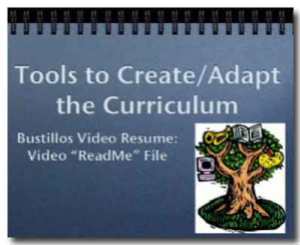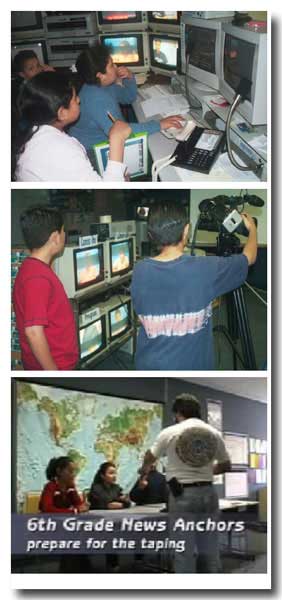Ed Tech: Tool To Create/Adapt the Curriculum
 Over the years, as I moved from high school to college to whatever it is that is supposed to follow college, I seriously began to work at my skills as a writer (after all, I did get a BA in journalism in 1991 from Cal State Fullerton). One thing that came from this was a skill to observe and a fascination or curiosity about life and we human creatures. “What is man?” asks the Poet.
Over the years, as I moved from high school to college to whatever it is that is supposed to follow college, I seriously began to work at my skills as a writer (after all, I did get a BA in journalism in 1991 from Cal State Fullerton). One thing that came from this was a skill to observe and a fascination or curiosity about life and we human creatures. “What is man?” asks the Poet.
Social Studies
So I brought this love of the word and wonderment at discovery to my first assignment as an elementary school teacher. Alas, I quickly discovered that there seemed to be a gigantic cultural gap between myself and my classroom full of non-native English speakers and an even larger gap between them and the sixth grade social studies textbook that we were supposed to use, for example. So, not knowing any better, I got a copy of the state social studies framework and began to create a curriculum that my mostly-low-literacy students could work with.
I created booklets for each unit containing crossword puzzles, word searches, short articles with multiple choice or short answer quizzes, and maps to color and fill in. The books were designed to be done individually but supported working as a group. But I wanted to get past just using text such that the core of the unit tended to be a video or story that would personify the particular civilization we were studying. For our Ancient People’s unit we read “Maroo of the Winter Caves.” For our unit on Mesopotamia I found a child-friendly copy of the “Epic of Gilgamesh” and a picture book version and combined the two versions to create a more engaging unit.
From the research, to putting together the booklets, to covering my classrooms walls with diagrams and maps, to reading the stories together using an overhead projector to display a seven-foot image of Gilgamesh and Enkidu fighting the Bull of Heaven, very little of this could have been done had I not had access to several technologies and also suffered from the ignorance of a novice who didn’t know what could or couldn’t be done.
Language Arts Goes to Video
As a writer I really wanted to spurn my students’ creativity and sense of discovery through their own writing and thus jumped into Writers’ Workshop with both feet. Alas, my students didn’t see the prospect of writing in their journal every night with the same enthusiasm as I did. Granted they were working in a second language, and I was probably the first teacher who required that they work primarily in English. And there’s something else about the “socialization” process in current public education that seems to sap the innate curiosity of these young minds such that by the time they are in the sixth grade only the two or three classroom nerds would welcome an assignment like writing in ones journal every night. It just wasn’t cool enough. Time to use the “video solution.”
 I’d been experimenting with video since the end of my bachelor’s degree. In fact the reason I went to video back then, being a print journalist, was for a media class where we were supposed to present a report about a media issue. I got bored stiff watching talking-head after talking-head drone through their little reports. I decided that if I was going to write about the media, what better way to make a presentation about it, than to use it. So my presentation about “Women and MTV” was a series of clips over which I’d recorded a voice-over of my “paper.” Instant “A.” Since then I’d employed the “video solution” where ever possible. This seem like the perfect solution when faced with a classroom full of unenthusiastic unmotivated sixth graders.
I’d been experimenting with video since the end of my bachelor’s degree. In fact the reason I went to video back then, being a print journalist, was for a media class where we were supposed to present a report about a media issue. I got bored stiff watching talking-head after talking-head drone through their little reports. I decided that if I was going to write about the media, what better way to make a presentation about it, than to use it. So my presentation about “Women and MTV” was a series of clips over which I’d recorded a voice-over of my “paper.” Instant “A.” Since then I’d employed the “video solution” where ever possible. This seem like the perfect solution when faced with a classroom full of unenthusiastic unmotivated sixth graders.
I scrounged up two mostly unused VHS cameras and my own little VHS-C camera, broke the class up into groups of three or four and instructed them to come up with ideas for short PSAs (public service announcements). I trained them on how to use the cameras and sent the groups who were ready to shot out to film in the playground and field around the classroom. After spending twenty or so minutes filming, I’d call the groups back in and I’d have the whole class critique what things worked and what things didn’t work from that day’s videotaping.
For the most part the students tended to re-tell stories or TV shows that they continually saw on TV. Thus, many PSAs seemed to devolve into long running police chases a la “Cops!” Eventually two groups organized themselves into straight TV News shows with an anchor at the desk and reporters in the field (literally). I also got the idea, from listening to Jane Child’s song “Welcome to the Real World,” to have my students write a paragraph or two about what they thought about when they heard their parents talk about the real world. I then took the nine best essays and had them read their essays into a tape deck to create a voice-over to the song with video footage I’d taken of walking through downtown Long Beach in the middle of the night. See “Classroom Video Journalism” for these clips.
 Video Experiment Becomes School-Wide Video Journalism
Video Experiment Becomes School-Wide Video Journalism
My video experiments caught the attention of the principal and she asked me to write up a ‘wish list” of what software and hardware it would take to create an on-campus video studio designed to produce, edit and broadcast live student created news programs. My list became part of our school’s Federal Magnet grant application. A year later we were awarded the grant and it became my full-time job to make the little list into a real functioning program.
Furgeson Elementary became FACT (Furgeson Academy of Communication & Technology). When we began to create the video program the person in charge of curriculum and principal wanted to use the studio like another “drop-off” activity, similar to the way teachers dropped off their students for computer lab, library time or PE. But the requirements of video editing and production didn’t conform to 30-minute shifts. Instead I worked with one 5th grade class and one 6th grade class for a third of the year so that all three fifth grade and all three sixth grade classes got a chance at working on the broadcasts.
As I had done with my own students in the first experiments, I had the fifth graders break-up into teams of four. They were in charge of video-taping and editing the “remote” packages of interviews and activities that I’d assign to them. Everyone in the team needed to know how to do every job, but two would primarily do the camera work and interviewing and the other two would take the tape and edit it down to a short three-minute segment that we could use in the news program.
The sixth graders were in charge of the studio and the news broadcasts. They were broken down into areas of interest such as news, weather, entertainment, and sports. They were also given an opportunity to be one of the on-air reporters, work one of the three cameras, assist the camera persons, run the Trinity video/graphics switcher, run the tape machines, or be the floor director. We were able to produce 11 news shows during our last year of operation.
Kindergarten through fourth grade and the fifth and sixth grade classrooms not working as part of the video teams were given studio time to present their own commercials, readings and presentations. These classes were also welcomed to have one of our fifth grade “remote” coverage teams videotape their events. See “Magnet School: FACT-TV” for examples of work done during this program. JBB










